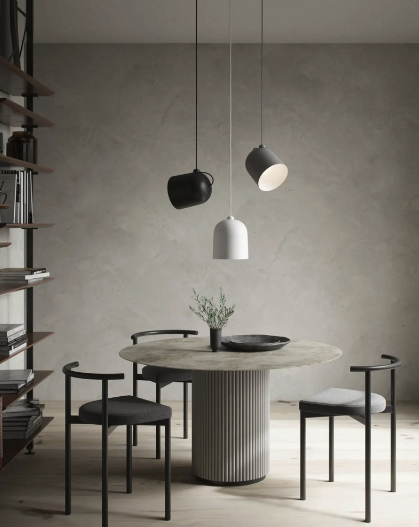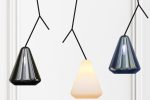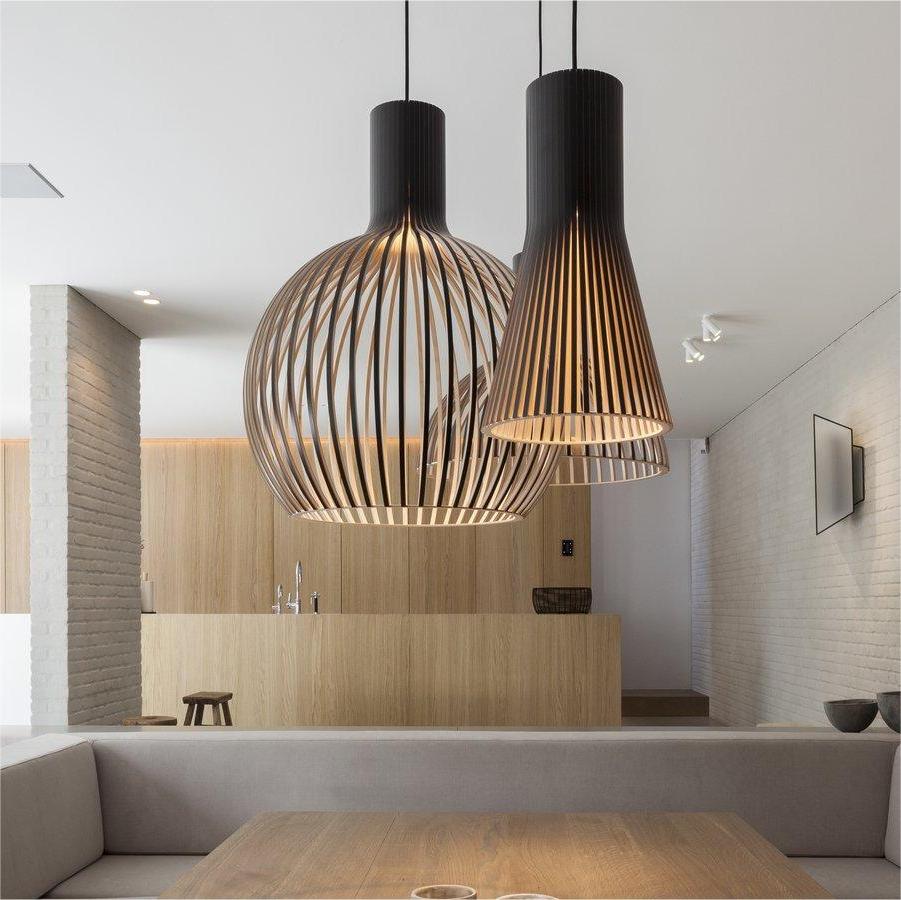The evolution of Scandinavian pendant lighting is deeply intertwined with the broader narrative of Scandinavian design, which emerged in the early to mid-20th century. This period was marked by a significant cultural shift, as countries like Denmark, Sweden, and Norway began to embrace modernism, emphasizing functionality, simplicity, and a connection to nature. The post-World War II era saw a surge in industrial design, where artisans and designers sought to create pieces that were not only aesthetically pleasing but also practical and accessible to the masses.
Pendant lighting became a focal point in this movement, as it offered a way to illuminate spaces while also serving as a statement piece. One of the pivotal moments in the history of Scandinavian pendant lighting was the introduction of the PH lamp by Danish designer Poul Henningsen in 1925. Henningsen’s design philosophy revolved around the idea of creating light that was both beautiful and functional.
His innovative use of multiple shades to diffuse light effectively transformed the way spaces were illuminated. This design not only reduced glare but also created a warm ambiance, which became a hallmark of Scandinavian interiors. Over the decades, other designers followed suit, contributing to a rich tapestry of pendant lighting that reflected the region’s commitment to craftsmanship and quality materials.
The Characteristics of Scandinavian Pendant Lighting
Characteristics of Scandinavian Pendant Lighting
Scandinavian pendant lighting Cintata is known for its minimalist style, often featuring clean lines and organic shapes. The designs typically prioritize functionality without sacrificing beauty, resulting in fixtures that are both practical and visually appealing. Materials such as wood, metal, glass, and textiles are commonly used, reflecting a deep respect for natural resources and craftsmanship.
Color Palette and Versatility
The color palette of Scandinavian pendant lighting tends to be muted, with whites, grays, and earthy tones dominating. This allows these fixtures to blend seamlessly into various interior styles. The subtle color scheme also enables the lighting to be easily paired with different design elements, making it a versatile choice for any room.
Emphasis on Light Quality
A defining feature of Scandinavian pendant lighting is its emphasis on light quality. Designers often focus on how light interacts with the surrounding space, aiming to create a warm and inviting atmosphere. This is achieved through thoughtful design elements such as layered shades or diffusers that soften the light and reduce harsh shadows.
The Influence of Scandinavian Design on Modern Interiors
The impact of Scandinavian design on contemporary interiors cannot be overstated. Its principles of simplicity, functionality, and connection to nature have resonated with designers and homeowners alike, leading to a widespread adoption of these ideals in various settings. The open floor plans typical of Scandinavian homes promote a sense of spaciousness and lightness, which is often enhanced by the strategic placement of pendant lighting.
These fixtures serve not only as sources of illumination but also as focal points that draw the eye and add character to a room. Moreover, the integration of natural materials and textures has become a hallmark of modern interior design influenced by Scandinavian aesthetics. Wood accents, soft textiles, and earthy color schemes create a harmonious environment that feels both cozy and sophisticated.
Pendant lighting plays a crucial role in this context, as it can highlight these elements while providing essential illumination. For instance, a beautifully crafted wooden pendant light can complement a rustic dining table or accentuate the warmth of a living room filled with natural fibers. This synergy between lighting and interior design fosters an inviting atmosphere that encourages relaxation and social interaction.
How to Incorporate Scandinavian Pendant Lighting into Your Home
Incorporating Scandinavian pendant lighting into your home involves more than just selecting a fixture; it requires thoughtful consideration of the space and its intended use. One effective approach is to identify key areas where pendant lights can enhance both functionality and aesthetics. For example, over a dining table or kitchen island, a well-placed pendant light can create an intimate dining experience while also serving as a striking visual element.
Choosing fixtures with adjustable heights allows for versatility in different settings, ensuring that the light is both practical and visually appealing. When selecting pendant lighting, consider the scale and proportion relative to the surrounding furniture and architecture. A large statement pendant can serve as a dramatic focal point in an expansive room, while smaller fixtures may be more appropriate for cozy nooks or intimate spaces.
Additionally, layering different types of lighting—such as combining pendant lights with wall sconces or floor lamps—can create depth and dimension within a room. This layered approach not only enhances the overall ambiance but also allows for greater flexibility in how spaces are illuminated throughout the day.
The Versatility of Scandinavian Pendant Lighting
One of the most compelling aspects of Scandinavian pendant lighting is its versatility across various design styles and settings. While rooted in minimalism, these fixtures can adapt to diverse aesthetics—from contemporary urban lofts to rustic country homes. Their clean lines and understated elegance make them suitable for both modern and traditional interiors.
For instance, a sleek metal pendant light can seamlessly integrate into an industrial-style kitchen, while a soft fabric shade may enhance the warmth of a Scandinavian-inspired living room. Moreover, Scandinavian pendant lights can be used creatively in unexpected spaces. In addition to traditional placements over dining tables or kitchen islands, they can be employed in hallways, entryways, or even bedrooms to add character and warmth.
Grouping multiple pendant lights at varying heights can create an eye-catching installation that serves as both art and illumination. This adaptability allows homeowners to express their personal style while benefiting from the functional advantages that these fixtures provide.
The Sustainability of Scandinavian Pendant Lighting
Scandinavian design philosophy is deeply rooted in the principles of sustainability, reflecting a strong commitment to environmental responsibility and ethical production practices.
Embracing Eco-Friendly Materials
Many designers prioritize the use of sustainable materials in their creations, such as responsibly sourced wood or recycled metals in pendant lighting. This focus on eco-friendly materials not only reduces environmental impact but also aligns with the growing consumer demand for sustainable products in today’s market.
Timeless Designs for a Sustainable Future
Scandinavian lighting brands emphasize longevity in their designs, creating timeless pieces that transcend fleeting trends. By doing so, these designers encourage consumers to invest in quality over quantity, minimizing waste and fostering a culture of appreciation for craftsmanship and durability.
Energy Efficiency in Pendant Lighting
Furthermore, energy-efficient lighting technologies such as LED bulbs are increasingly integrated into pendant designs, further enhancing their sustainability credentials while providing cost-effective solutions for homeowners.
The Top Scandinavian Pendant Lighting Designers
Several designers have made significant contributions to the realm of Scandinavian pendant lighting, each bringing their unique vision and craftsmanship to the forefront. One notable figure is Louis Poulsen, whose collaboration with Poul Henningsen resulted in iconic designs that continue to influence contemporary lighting today. The PH series remains celebrated for its innovative approach to light diffusion and aesthetic appeal.
Another prominent designer is Arne Jacobsen, known for his functional yet elegant designs that have become synonymous with Danish modernism. His AJ lamp series exemplifies how simplicity can yield striking results while maintaining practicality. Additionally, brands like Muuto and Normann Copenhagen have emerged as key players in the modern lighting landscape, offering fresh interpretations of traditional Scandinavian design principles through innovative materials and forms.
The Future of Scandinavian Pendant Lighting
As we look toward the future of Scandinavian pendant lighting, several trends are poised to shape its evolution within interior design. One significant direction is the continued emphasis on sustainability and eco-conscious practices among designers and manufacturers alike. As consumers become increasingly aware of their environmental footprint, there will likely be greater demand for products that prioritize sustainable materials and production methods.
Moreover, advancements in technology will play a crucial role in shaping the future of pendant lighting design. Smart home integration is becoming more prevalent, allowing homeowners to control their lighting through apps or voice commands. This trend opens up new possibilities for customization and adaptability within Scandinavian designs while maintaining their core principles of simplicity and functionality.
In conclusion, Scandinavian pendant lighting stands at the intersection of tradition and innovation, reflecting a rich history while adapting to contemporary needs and preferences. Its enduring appeal lies in its ability to enhance spaces through thoughtful design that prioritizes both aesthetics and functionality. As we move forward into an era marked by sustainability and technological advancement, it is clear that Scandinavian pendant lighting will continue to illuminate our homes with elegance and purpose.


